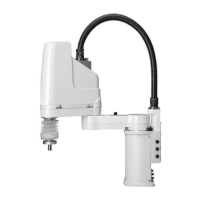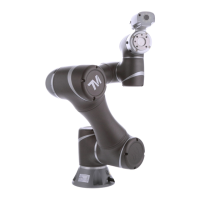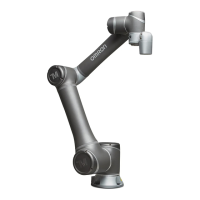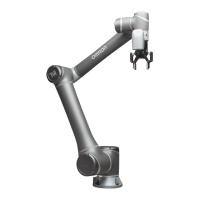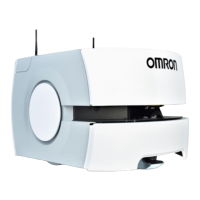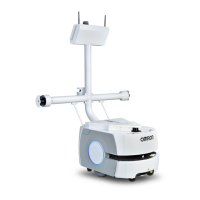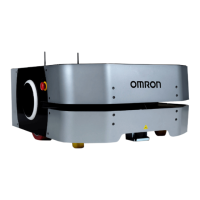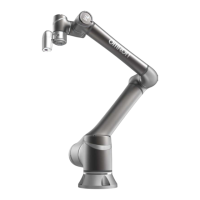4-4
CHAPTER 4 Adjustment
3-1-2 Mark method (X-axis, Y-axis, and R-axis)
In the mark method, you move the robot beforehand, to the position where you
want to perform absolute reset and then perform absolute reset there.
Use either of the following 2 methods to move the robot to the position where
you want to perform absolute reset. (See Fig. 4-3.)
(1) Move the robot in step jog while the servo is on.
Select this method when the mark (sticker) indicating the origin posi-
tion can be seen from outside the robot movement range.
(2) Move the robot manually while the servo is off.
Select this method when the mark (sticker) indicating the origin posi-
tion cannot be seen from outside the robot movement range.
3-1-3 Stroke end method (Z-axis)
In the stroke end method, absolute reset is performed at a position slightly
backed off from the stroke end, after the Z-axis contacts the mechanical stopper
and stroke end is detected.
CAUTION
USE THE PROGRAMMING BOX (PB) OR THE RS-232C PORT WHEN
USING THE MARK METHOD FOR ABSOLUTE RESET. YOU CANNOT
USE DEDICATED INPUTS TO PERFORM ABSOLUTE RESET.
CAUTION
THE DEVIATION BETWEEN THE ORIGIN POSITION MARKS MUST BE
WITHIN A SPECIFIED RANGE (REPEATABILITY TOLERANCE) WHEN
PERFORMING ABSOLUTE RESET AT THE SAME POSITIONS AS THE
PREVIOUS ABSOLUTE RESET. (SEE FIG. 4-4.)
A POSITION DEVIATION (POSITIONAL SHIFT) WILL OCCUR IF
ABSOLUTE RESET IS PERFORMED AT A POSITION OUTSIDE THE
REPEATABILITY TOLERANCE OR AT A POSITION DIFFERENT FROM
THE PREVIOUS ABSOLUTE RESET POSITION.
USE THE SUPPLIED ORIGIN POSITION STICKERS TO PUT A MARK ON
THE ORIGIN POSITIONS OF THE X-AXIS, Y-AXIS AND R-AXIS, SO THAT
YOU CAN PERFORM ABSOLUTE RESET AT THE ORIGIN POSITIONS
WITHIN THE TOLERANCE RANGE.
ORIGIN POSITION REPEATABILITY (TOLERANCE) VALUES FOR EACH
ROBOT AXIS ARE SHOWN IN TABLE 4-1.
WARNING
SERIOUS INJURY MIGHT OCCUR FROM PHYSICAL CONTACT WITH
THE ROBOT DURING OPERATION.
NEVER ENTER WITHIN THE ROBOT MOVEMENT RANGE DURING
ABSOLUTE RESET.
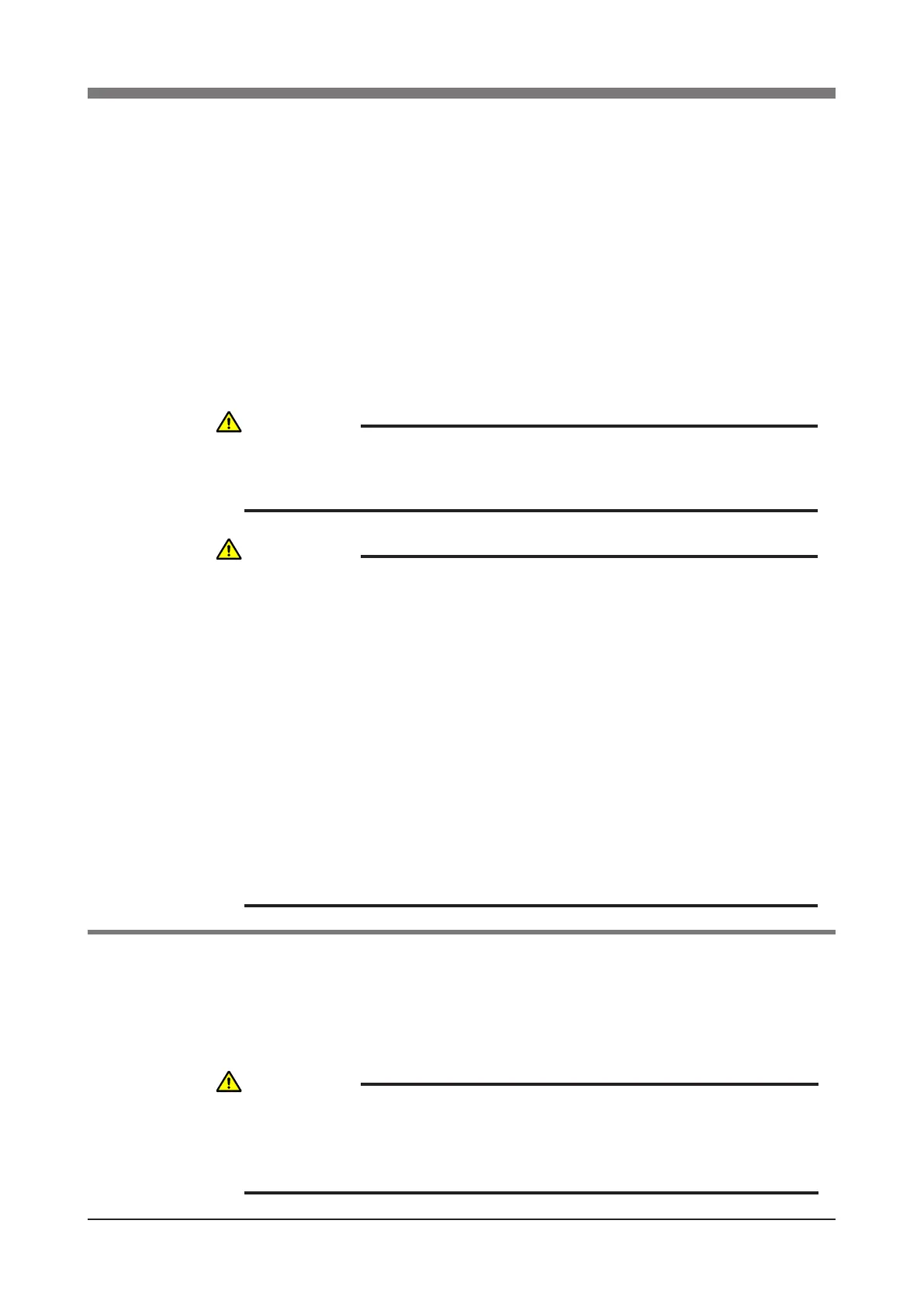